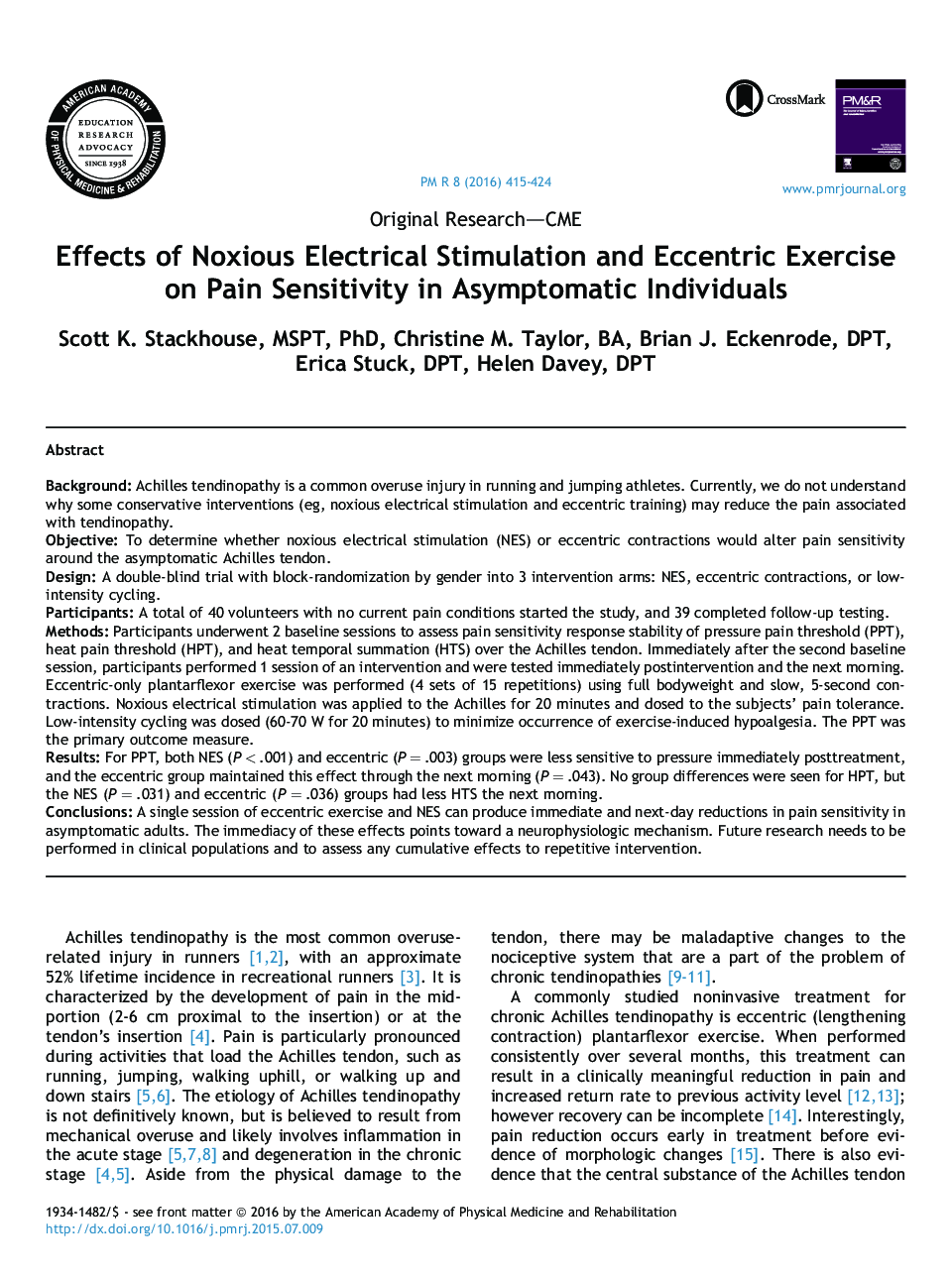| Article ID | Journal | Published Year | Pages | File Type |
|---|---|---|---|---|
| 2711925 | PM&R | 2016 | 10 Pages |
BackgroundAchilles tendinopathy is a common overuse injury in running and jumping athletes. Currently, we do not understand why some conservative interventions (eg, noxious electrical stimulation and eccentric training) may reduce the pain associated with tendinopathy.ObjectiveTo determine whether noxious electrical stimulation (NES) or eccentric contractions would alter pain sensitivity around the asymptomatic Achilles tendon.DesignA double-blind trial with block-randomization by gender into 3 intervention arms: NES, eccentric contractions, or low-intensity cycling.ParticipantsA total of 40 volunteers with no current pain conditions started the study, and 39 completed follow-up testing.MethodsParticipants underwent 2 baseline sessions to assess pain sensitivity response stability of pressure pain threshold (PPT), heat pain threshold (HPT), and heat temporal summation (HTS) over the Achilles tendon. Immediately after the second baseline session, participants performed 1 session of an intervention and were tested immediately postintervention and the next morning. Eccentric-only plantarflexor exercise was performed (4 sets of 15 repetitions) using full bodyweight and slow, 5-second contractions. Noxious electrical stimulation was applied to the Achilles for 20 minutes and dosed to the subjects' pain tolerance. Low-intensity cycling was dosed (60-70 W for 20 minutes) to minimize occurrence of exercise-induced hypoalgesia. The PPT was the primary outcome measure.ResultsFor PPT, both NES (P < .001) and eccentric (P = .003) groups were less sensitive to pressure immediately posttreatment, and the eccentric group maintained this effect through the next morning (P = .043). No group differences were seen for HPT, but the NES (P = .031) and eccentric (P = .036) groups had less HTS the next morning.ConclusionsA single session of eccentric exercise and NES can produce immediate and next-day reductions in pain sensitivity in asymptomatic adults. The immediacy of these effects points toward a neurophysiologic mechanism. Future research needs to be performed in clinical populations and to assess any cumulative effects to repetitive intervention.
